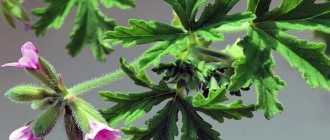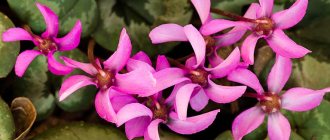Native to the rainforests of Central America, the large, bold plant Monstera deliciosa is also known as the "forked-leaf philodendron." This attractive climbing evergreen is a popular, easy-to-grow houseplant favored by many interior designers in both residential and commercial settings. How to propagate monstera?
Indoors, the plant has a moderate growth rate and can grow in height from 30 to 60 cm per year. Its leathery, glossy, distinctive cut and heart-shaped leaves arise from intricate aerial roots that can be used to make ropes and baskets. It is also called Swiss cheese plant because of its perforated leaves, which can grow up to 90 cm in length.
Plant outdoors in the desired area at any time of year and it will also produce cream-colored, bee-pollinated flowers and edible, juicy fruit with a combined pineapple and banana flavor. However, fruiting in indoor plants is rare. This beautiful plant can be toxic to pets.
Conditions for reproduction
To breed a monstera at home, you do not need special knowledge and skills, but for a high-quality and correct process, the following nuances must be taken into account:
- first of all, you should prepare a special substrate that is optimal for this species;
- You need to choose a well-lit place for the plant, since the plant loves light;
- After planting the cuttings, a necessary condition is to maintain a humid microclimate in the room; they need constant spraying with water for faster root growth;
- activates root growth and soil fertilization;
- in addition to creating suitable conditions for the formation of a young plant, it is worth thinking about your protection, since the monstera is poisonous; if its juice gets on the skin, it can cause damage.
Frequently asked questions related to growing monstera
Is it possible to keep Monstera at home?
- Undoubtedly, this is a very beautiful indoor plant. However, it needs a spacious, bright room with a constant temperature.
Is Monstera poisonous?
- No, house monstera is safe for both people and pets. The only thing that can cause harm to health is its unripe fruits, which can cause inflammation of the mucous membranes. But, as already mentioned, monstera practically does not bear fruit in indoor conditions.
Why do monstera leaves wither?
- Wilting leaves may indicate disturbances in temperature, humidity, or pest infestation.
Why do the leaves dry out?
- Leaves dry out if the plant does not have enough feeding, watering or spraying, or if the room is too hot.
Why does the monstera “cry”?
- Droplets of transparent viscous liquid appear on monstera leaves on the eve of rain. This plant can be considered a natural barometer and can “predict” rain at least 24 hours in advance.
How to propagate by cuttings?
There are several ways to propagate this plant, cuttings are the simplest of them. Cuttings are taken from the middle or upper part of the stem, but the shoot must have at least one bud.
The following steps should be followed:
- treat the scion with a drug that stimulates root formation;
- immerse one-third in an opaque container with settled water for several days;
- Make sure the water is at room temperature;
- After three young roots appear, the plant can be planted in a pot.
For planting monstera, the following substrate composition (all components are taken in equal proportions) is ideal:
When cuttings, the roots grow quite quickly, about 2-3 weeks, but until they are fully formed, new shoots and leaves do not appear. This situation can be corrected by feeding the scion with growth stimulants.
When propagating by cuttings in soil, you must perform the following steps:
- a shoot is planted in a container with a sandy or peat substrate;
- the soil temperature is maintained at +28 degrees, high humidity conditions are created by covering the dishes with film or glass;
- when roots appear in large quantities, the cutting is ready for planting (about 3–4 weeks);
- transplant the plant into a pot with prepared substrate.
This rooting method has a drawback: at the base the stem does not strengthen and does not grow, but remains the same size, because of this the plant can easily break. To prevent this, you need to choose fairly thick cuttings or use a support, or you can combine these two options.
They also use a horizontal rooting method in the soil. A shoot with two buds is cut horizontally . It is placed lying on a light substrate, it can be moss, sand or even hydrogel. You don’t have to sprinkle the cuttings on top, but at least one bud must touch the ground. The container with the plant is covered with film, creating mini-greenhouse conditions. The sprout needs to be regularly moistened and sprayed, and after the first roots and leaves appear, it can be planted in a pot.
Seeds
The seed propagation method is very long and labor-intensive.
Only fresh seeds are used for sowing, since over time they lose their viability. The optimal way to germinate seeds is in plastic bags filled with 5% damp sphagnum moss (the rest of the space is air).
The bags should be kept in a place with a good level of indirect light and a temperature of 25-28 degrees. The first shoots appear after 30-50 days.
Strong seedlings are transplanted into a mixture of leaf, turf soil and sand. Their growth and development is slow. By 2 years, the plant will have up to 5 juvenile leaves (without slots) and about 4 adult leaves.
How to propagate using a leaf?
You can grow a new plant from fallen leaves. If a monstera has dropped a leaf, you should not throw it away. The leaf must be placed petiole down in a container with clean water at room temperature, with a volume of at least 1.5 liters. The dishes are placed in a well-lit, warm place until the roots appear. When the formed roots grow a little and become stronger, the leaf can be transplanted into a large pot to a permanent place of growth. The type of substrate used is the same as for other methods of propagation.
It is better to wait for more roots, then the sprout will be able to take root better in the soil . To ensure that the newly formed plant does not bend under its weight, it must be tied to some kind of support.
You can tell whether a leaf has taken root or not by its appearance. If it is strong, not wilted or yellowed, it means the plant has begun to grow and is beginning to grow.
When using this method of reproduction, you should pay attention to the following nuances:
- the formation of the root system takes up to 1 month;
- the water container should be opaque, since monstera roots do not like light;
- very often the leaf withers even before the roots appear.
Plant characteristics
Monstera is part of the Aroid family. The flower's homeland is the South American continent; it grows naturally in the tropics of southern Brazil, India, and Mexico. Basically, the plant wraps itself around a tall tree and can stretch up to 50 meters in height. Monstera leaves reach a meter in diameter in good conditions. In weaving on a tree, it is helped by aerial roots that descend to the surface of the earth. In case of loss of the main root system, the aerial parts will feed the flower, becoming fixed in the trunk of the tree on which it climbs.
Interesting! In an apartment, a monstera can reach 6 meters in height in 5 years.
The appearance of Monstera is spectacular due to its large leaves, which become dissected in some places with age. The leaf plate is equipped with hydriators; during periods of high humidity they release drops of liquid.
Interesting! Thanks to its hydriators, Monstera is considered a natural barometer; drops can appear on it 24 hours before rain.
Propagation by aerial roots
Monstera, like some plants, has aerial roots, additional organs whose main task is to absorb moisture from the air. Even if there are a large number of aerial roots, they should not be removed, since they provide additional nutrients from the soil and air. Propagation by layering with aerial roots is not a very complicated procedure. To do this, the selected stem in the required place is covered with moistened moss around the circumference and wrapped in polyethylene, creating a kind of greenhouse. They are fixed from below and from above so that it holds well.
After the roots have formed, the sprout must be carefully separated from the adult and planted in a new pot. All cuts must be disinfected with crushed charcoal.
Article on the topic: Erantis (spring flower): planting and care in open ground, photo, growing from seeds
The best option is to look for the leaf near which the largest aerial roots grow. You need to wrap the film loosely so that there is free space for growth . When planting a plant, do not forget that Monstera is quite large in size and grows very quickly, so a small pot is not suitable. Like any other vine, the plant needs support - this can be either an artificial trunk or a pipe made of moss.
Possible problems
Planting monstera at home is not too difficult. But although it is not particularly demanding, it still needs some care. To avoid problems, you must follow certain rules when maintaining this plant.
It is worth paying attention to the most common problems that may arise, such as:
- stops growing and developing - the location is incorrect, there is not enough light;
- the surface of the leaves is covered with brown spots – spider mite infestation;
- The leaf blades begin to turn yellow - there is not enough moisture;
- the leaves turn yellow and begin to rot - excess watering, it is worth reducing their quantity;
- the edges of the leaves dry out and turn brown - the air temperature is too high for the plant or it is too close to heating devices, drafts are also possible;
- the leaf plates are covered with yellow spots - burns from direct sunlight are possible;
- leaves are wet, as if covered with dew - excessive moisture, you need to stop watering so that the soil has time to dry;
- leaf plates lose their shape , become solid, without shaped cuts - deficiency of nutrients in the substrate;
- the plant is susceptible to certain types of rot , then copper-containing preparations are used against them, and leaf diseases, while the damaged ones must be removed;
- Of the pests, monstera can be damaged by scale insects and nematodes (the fight consists of removing parasites and treating the plant with fungicides).
With proper care, there will be no need to solve problems with the appearance and health of the flower.
Monstera can be planted nearby and you can get new plants without much hassle. You just need to choose the right seedling and create comfortable conditions for it to grow.
Caring for a monstera is not very burdensome, but you still need to follow some rules so that the plant takes root well and delights with the appearance of new beautiful leaves.
- First of all, you need to know that for good growth and a healthy state, the plant needs the right substrate . First, drainage is placed at the bottom of the pot, mainly fine expanded clay, then a ball of peat mixed with humus, and a 2-3 cm layer of sand. Proportions are taken in equal quantities. You can plant cuttings only in sand, but after the roots form, the plant sits in prepared soil.
- Before the seedling is completely rooted, the soil should be moistened frequently, but not flooded . It is also necessary to create a comfortable temperature. It should stay within +22–+25 degrees. The higher the temperature, the larger the leaves grow. You can place the plant under a transparent jar or bag, thereby creating greenhouse conditions. An improvised greenhouse must be opened periodically.
- Seedlings also need high air humidity. If possible, spraying should be carried out 2 times a day . You can remove the jars after the plant is well established.
- Good lighting is a necessary condition for shoot growth. The light must be diffused and abundant , otherwise the processes of growth and rooting will stop. It is this indicator that influences the formation of the original pattern on the leaf plates and the rich green color. An adult plant no longer needs abundant lighting, so it can be moved to a somewhat shaded place.
- Fertilizing monstera during propagation is also a necessary factor. It is enough to fertilize once a month with weak solutions of complex fertilizers . To do this, 2 grams of the drug are diluted in 1 liter of water and watered. After this procedure, the growth of seedlings noticeably accelerates.
- When planting young plants, you need to remember that they grow very quickly, so even for small sprouts you should not choose small pots .
By following simple rules of propagation and care, you can independently grow a beautiful and strong monstera that will delight you with its majestic appearance for a long time.
Reproduction of monstera at home
Monstera is an evergreen tropical vine, naturally distributed in South and Central America, the rainforests of Brazil, and Asia. This large plant of the Araceae family has a thick curly stem, large perforated leaves with a diameter of up to 50 cm. Under natural conditions, the epiphyte is attached to supports by adventitious aerial roots, and during flowering it produces cobs.
In apartments it is grown as a potted indoor plant, it practically does not bloom. Monstera, which is easy to reproduce at home, fits perfectly into any interior, purifies the air, and creates a harmony of comfort.
Other types of monstera: photos, names and descriptions
Next, you can see photos and names of other monstera species, as well as read descriptions of these plants.
Climbing vines. The leaves are large, up to 60 cm in diameter, heart-shaped, deeply dissected, pinnately lobed and with holes, leathery. The cob is 25 cm long and 10–20 cm thick. The spathe is white. Young leaves are heart-shaped, entire. The fruit is a berry with the smell of pineapple; The pulp of the fruit is edible (sometimes there is an unpleasant burning sensation in the mouth due to the presence of calcium oxalate crystals) and tastes like pineapple. The fruits ripen from flowering time within 12–14 months.
A widely known climbing houseplant; in greenhouses it reaches 10–12 m in height, in rooms – up to 3 m.
There are various decorative forms with variegated leaves: “Variegata”, “Albovariegata”, “Marmorata”.
Monstera is delicious (Monstera deliciosa Liebn.). Family Araceae. Homeland - tropical regions of America. A powerful perennial liana-like plant. The stem is bare, climbing, with aerial cord-like roots. The leaves are large, with long petioles, leathery; in adult monsteras they are either perforated or dissected. Small flowers are collected in a thick cylindrical spadix. The fruits are edible. The plant is undemanding to light and temperature, but is moisture-loving. In summer, it is watered abundantly, often sprayed and fed with liquid fertilizer once every 10 days; in winter, watering is moderate. It is very useful to lower the cord-like roots of monstera into flowerpots with water, which promotes faster leaf development and growth. In soil culture, it is better to grow Monstera in living rooms in the form of a relatively low, upright plant attached to a support. They are replanted annually in the spring, large specimens - once every two years, but the top layer of soil is replaced annually with fresh ones. Propagated by cuttings - part of a stem with 1-2 small leaves, which take root in water, sand, expanded clay, or ion-exchange substrate. In soil culture, the mixture is made up of turf and leaf soil with the addition of sand (3:1:1).
In order for a monstera to bloom in a room, conditions are necessary that are close to those it has in its homeland. The plant is placed on an eastern, western or northern window and is often watered and sprayed in summer. Drainage from shards is required at the bottom of the dish. For aerial roots, place pots with soil. Grows well in hydroponic and ionitoponic crops. As a powerful plant, it is suitable for large rooms, winter gardens, and halls.
To create small compositions, you can use dwarf forms of monstera, for example M. borsigiana with bluish-green leaves. It is widespread in the tropics from Mexico to Panama. Young leaves are entire, heart-shaped, adult leaves are about 30 cm long, pinnately dissected, often perforated along the main vein. Or a thin vine of Monstera oblique - M. obliqua gray. Its leaf blade is about 20 cm long, up to 10 cm wide, long-pointed at the apex, perforated with holes of different sizes. It practically does not bloom in cultivation. Homeland - Brazil. Distributed in tropical rainforests.
Monstera Adanson - M. adansonii Schott var. laniata madison. A liana reaching a height of 8 m. Its leaves are thin, about half a meter long, with numerous small holes throughout the ovoid-shaped plate. It grows in the tropical forests of Brazil and Costa Rica.
Monstera acuminate – M. acuminata (M. karwinskyi Schott). A powerful vine with light green, whole, dense leaves. Petioles are up to 40 cm long, the leaf blade is oblong-heart-shaped, about half a meter, 20 cm wide. It never blooms in cultivation. Homeland - tropical forests of Mexico.
Methods for propagating monstera at home
Reproduction of Monstera deliciosa, and this is the species that gardeners usually grow in apartments, is not particularly difficult even for beginners in this matter. It’s easy to grow an exotic plant at home by taking a cutting or a separate shoot from a friend. There are five ways in total to propagate monstera, and all of them guarantee the survival of planting material if simple recommendations are followed.
The evergreen vine reproduces:
- cut apical cuttings;
- lateral, stem cuttings;
- layering;
- leaves;
- purchased seeds.
Propagation by apical and stem cuttings
Cuttings are the most popular method of propagating Monstera deliciosa. Cuttings can be cut from the sides of the trunk or from the top of the vine, the main thing is that one healthy bud remains on the stem. There are two ways to root a monstera with cuttings:
On a note. When selecting cuttings, it is better to give preference to the shortest one, since long ones take a long time to take root and often rot in water.
The algorithm for growing roots in a jar of water consists of several steps.
- Take a shoot with one or several leaves, treat the cut site with a root formation stimulator (for example, “Kornevin”).
- Pour settled water into an opaque jar and place the cutting there for 5-7 days.
- Wait until the white roots appear.
- Transplant the cutting into a spacious, stable pot, purchasing any nutritious soil or expanded clay for drainage.
When rooting in the ground, the actions of the grower are slightly different. It is necessary to purchase a pot of the required size in advance, prepare a nutritious soil mixture and drainage. The rooting algorithm consists of several stages.
- Pour expanded clay, pebbles or broken bricks, and shards onto the bottom of the flowerpot. Fill the container halfway with soil.
- Make a depression in the middle with your hand and install the stalk.
- Sprinkle the sides and top with soil and water.
- For better survival, cover the pot with a bag for 2-3 weeks.
Related article: Kobei flower: growing from seeds, photos, planting and care in open ground
On a note. You can prepare the soil mixture yourself by mixing humus, sand, peat and garden soil in equal parts in a bucket.
To ensure that the apical or lateral cuttings planted in the soil do not break at the base and grow strong, it is advisable to immediately install a support in the pot and use thick shoots with a strong stem for propagation. For those who like to experiment, you can use the horizontal method of rooting cuttings in the ground. To do this, a part of the stem with buds is placed in a lying position in a planting box, sprinkled with earth, regularly watered for the appearance of new shoots, then planted in separate pots.
Leaf rooting
It is not difficult to propagate monstera with leaves, but the method is less effective than rooting by cuttings. This option is used when, after an illness, only one healthy leaf remains from the plant, or it simply broke off, and it is a pity to throw it away. The process of growing roots in this case lasts longer, because the leaf needs more strength and nutrients.
Full roots usually appear only after 1-1.5 months, during which time the leaf completely turns yellow and withers. For rooting, you will need an opaque and wide container with water, which will have to be placed in a warm, but not too bright place.
Propagation by aerial roots
Hoping to propagate monstera with aerial roots, you will have to be patient. This technology is not very simple, especially for beginners. The process consists of several stages.
- Find a leaf on the vine from which healthy greenish-brown aerial roots grow. Air layering that is too dry and blackened is not suitable for propagation.
- Tie wet moss to the roots at the base of the leaf and wrap it in a bag.
- Constantly moisten the moss ball with a spray bottle, waiting for the cuttings to grow.
- When a sprout appears, carefully cut it off with a sharp knife and treat the cut area on the vine with crushed charcoal.
- Transplant the branch into a pot with nutrient soil, water with settled water.
Planting seeds
Planting monstera with seeds is the most difficult and time-consuming method, very rarely used at home. Moreover, the material for growing can only be bought - it is almost impossible to collect it yourself. Purchased seeds should be sown from late February to March in small containers with disinfected soil. The landing algorithm includes several stages.
- Pour soil into the box, make grooves with your finger, and bury the seeds 1-2 cm.
- Sprinkle the soil with water and cover with film.
- Protect from drafts, regularly ventilate the greenhouse and water it.
- Wait until the shoots appear, usually this happens no earlier than 5-6 weeks after planting.
The sprouts will need to be sprayed with a spray bottle; when a couple of side shoots appear, the seedlings will have to be plucked in order to plant the seedlings in separate pots. The warmer the room and the more nutritious the soil in the flowerpot, the faster the monstera sprouts will grow.
Seedling care
When propagating monstera by any chosen method, you need to remember to care for the flower after planting. The liana is not capricious, but it grows slowly and requires good light and warmth. Here are some tips for growing scions, cuttings or sprouts of this beautiful exotic plant.
- Choice of location and lighting. It is better to place the pot on western and eastern windows in a warm, fairly bright room. Liana does not like darkness; from a lack of light, its leaves become smaller and “holes” disappear on them. The light should be diffused, not too bright, so that sunburn spots do not appear on the leaves.
- Temperature. The plant loves warmth; the optimal room temperature for growing is 20-25°C in summer and up to 20° in winter, but not lower than +12-13°. With this content, the monstera will grow quickly, forming a thick green mass and fatty aerial roots.
- Air humidity. Liana loves regular moisture and responds well to weekly spraying of the leaves and wiping them with lukewarm water. Young plants can be washed in the shower or taken out in the rain in the summer to get rid of dust on the leaves.
- Watering. A tropical flower should be watered abundantly, especially in spring and summer, when it is hot outside and at home. The dugout lump should ideally never dry out. In winter, watering is slightly reduced and the intervals between soil moistening are increased. It is also impossible to flood the soil, this can lead to the death of the vine.
- Feeding. Monstera grows well without fertilizing, but to give the flower a beautiful look and the leaves a healthy shine, you can add any complex mineral compositions to the soil every 3 weeks from spring to late summer when watering.
- Support. In order for a climbing vine to grow upward and not fall or break, it requires the installation of a strong support. Usually they use purchased hollow plastic sticks wrapped in coconut fiber, less often they use plastic or wooden gratings, tie the stem with twine to the wall or window handle.
- Transfer. Young shoots are replanted annually, as they grow quickly and gain strength. Plants that are already 4-5 years old are transplanted into larger pots by transferring them together with a lump of earth. For old plants, sometimes reaching a height of 3-4 m from the floor, simply replace the top layer of soil in the pots with a new one.
Tips for flower growers from colleagues in the workshop
It happens that when caring for a monstera, no matter how unpretentious it may be, novice gardeners have problems.
Here are the most common of them and measures to eliminate them:
- Monstera leaves are turning yellow . You cannot deprive the beauty of her main advantage - luxurious leaves. But how can I help her? Perhaps the soil in the pot is waterlogged. To correct the situation, it is enough to reduce the frequency of watering or reduce the amount of water poured. But if the leaves not only turn yellow, but also become covered with brown spots, watering, on the contrary, should be increased. This sign symbolizes a lack of moisture in the soil. Be careful not to confuse too much water with too little water.
- The plant has translucent leaves with a yellowish tint . So the monstrous beauty says that there is too much light for her. The problem can be solved by simply rearranging the pot.
- The leaves are not completely cut, the stem is bare . This happens when there is not enough light. Remember that the ideal conditions for this green friend are partial shade.
- The monster has dry ends . Excessive dry air in the room can lead to such consequences. This, by the way, is harmful not only for the plant, but also for humans, especially if you spend a lot of time at the computer. Therefore, place a vessel with water in the room with the flower or provide additional moisture in some other way. And say “thank you” to the plant for the timely signal.
- The leaves of the plant have turned brown . Do not forget to reduce the degree of soil moisture when the air temperature drops. Then the leaves will be fresh and green.
Florist experience:
Possible problems, tips
To grow a monstera at home, you need to remember that it is best to take cuttings or plant shoots in the spring. It is worth paying special attention to the quality and nutritional value of the soil, the size of the pot, the degree of illumination and the regularity of watering. If these requirements are ignored, the flower will grow slowly, the leaves will become crushed and wither, and the vine will not have a beautiful appearance.
To avoid problems when growing, you should follow the recommendations of experienced gardeners given below.
- In a plant propagated by cuttings, the stem grows only upward, but does not increase in width. So that the trunk at the base does not break as it grows, it must be sprinkled with earth, periodically replanted in a deeper pot, strengthened with a support, a support in the form of a ladder.
- Yellowing and falling of withered leaves usually indicates a too dry and hot microclimate in the apartment, lack of watering and fertilizing.
- After watering and before rains, the monstera “cries”. Drops of water flow down from the edges of its sheets. Because of this feature, the vine is often called “weeping”. There is no need to worry about this; this is a natural process for a tropical flower.
- If at the end of autumn the leaves die and fall off, you need to move the pot away from radiators and heaters, humidify the air in the room and around the flower more often, and spray the foliage daily.
- Sometimes the leaves become translucent in appearance in summer and lose their bright color. This occurs due to an excess of lighting when the plant is exposed to direct sunlight. To correct the error, you should move the pot deeper into the room and remove it from the windowsill.
Related article: Amaryllis bulbs: storage
Rarely, the plant is affected by insect pests such as spider mites, aphids or scale insects. To combat them, you need to use special preparations, insecticides, spray the leaves with water more often, and follow the care conditions.
Below in the video you can study in detail how to propagate indoor monstera, watch a clear master class with tips from an experienced gardener.
Beware of pests!
The plant may be endangered by the following pests:
- Scale insects . How to identify: leaves dry out and fall off. What happens: insects suck out cell sap. How to fight: wipe the leaves with a soapy sponge and treat with actellik solution.
- Spider mite . How to detect: cobwebs in internodes, leaves falling off. How to fight: since the appearance of mites is usually caused by excessive dry air, the main method of control is to moisten the leaves by spraying. The first thing you need to do is wash them with a soapy sponge and rinse under warm running water. In particularly severe cases, you can treat with Actellik solution.
- Thrips . How to identify: the appearance of light dots on the outside of the leaf. How to fight: again, treatment with Actellik solution will be effective.
- Mealybugs . How to identify: leaves shrivel, dry out and fall off. How to fight: wash with a soapy sponge, rinse the leaves in a warm shower and regularly spray with plain water. In case of severe damage, you can again resort to the help of actellik.
In the wild...
That's all you need to know to grow a beautiful monstera from a small root. Go for it!
Monstera reproduction
Author: Veronika Viktorova February 21, 2022 Category: Plant propagation
If you ask the owners of Monstera how to propagate this flower, they will probably tell you that it is very easy to do. In fact, there are many subtleties and nuances that you need to know about. If you decide to propagate Monstera without understanding the features of the process, then, of course, you will achieve results, but you will spend more effort and time on it. And most importantly, the plant itself may suffer from this.
Monstera has a huge advantage in the matter of propagation: this flower is quite easy to root. In addition, almost any part of the plant can be used for propagation, because Monstera is essentially a tropical liana that tries to survive in nature by any means.
Dormancy and flowering period
Flowering periods in indoor conditions occur extremely rarely; sometimes it is possible only in a greenhouse or winter garden. In good conditions, the flower may appear in the second year of life. The fruit-cobs turn purple when ripe. They are edible and taste like pineapple. Tropical plants, which include Monstera, do not have a dormant period. They are cared for equally throughout the year.
Monstera propagation methods
So, let's start with what are the ways to reproduce Monstera .
Reproduction of monstera by apical cuttings
You can cut off and root the top of an adult Monstera. It needs to be placed in water for the cuttings to take root. It is advisable to wait until at least 3 root shoots appear. But the more, the better, since this way the plant will spend less time and effort during rooting, which means that the first leaves and shoots will appear faster.
Propagation of monstera by stem cuttings
The second method of propagation is by pieces of stem cuttings. I like this method the most. To do this, you need to take a part of the stem that has at least 2 buds, and then simply lay this piece of the cutting on the surface of the soil. It is best to take a container with a very light earthen mixture or even hydrogel, but I still prefer soil.
So, we take the cutting and lay it so that one bud touches the ground. You don’t even need to bury it or cover it with soil. In order to root the cutting, you just need to water and spray it. But it is necessary to make a greenhouse - for example, cover the cutting with glass or film, which will maintain the necessary microclimate around the cutting. Sometimes you need to remove the film to ventilate the plant. And when the roots appear, you can plant the cuttings in a permanent place. At this time, the first leaves may appear. By the way, they are heart-shaped. Dissected leaves appear later.
Monstera propagation by leaves
Many gardeners share their experience of growing Monstera from leaves, and this method also has a right to exist. But sometimes it doesn’t work: the leaf begins to wither, and it can be quite difficult to root it. But if you accidentally got a leaf (for example, it broke off on a Monstera growing in your friends’ house or in the office), then it’s worth a try. To do this, it is best to place the leaf in water and keep it there until a large number of roots appear. Therefore, you need to take a larger jar or container in which the leaf will take root, one and a half or two liters. And after the roots appear, you can plant the leaf in the ground.
Propagation of monstera by shoots with aerial cuttings
- air layering. This method will force you to tinker, but the results are much more reliable than the first two methods of Monstera propagation. Find a shoot - a leaf from which the strongest aerial roots come, and provide these roots with moisture: I tied moss, which I constantly watered and sprayed. To prevent it from drying out, I tied a piece of cling film around the moss and the trunk - it turned out to be such a greenhouse. You don't need to tie it tightly so that the roots have room to grow. This is how I grew roots on layering without cutting off the cutting from the stem. By the way, during the time that the shoot was growing roots, it also grew a leaf, and it immediately had a characteristic dissected shape.
When the roots were strong enough, I made a cut in the stem and separated a branch, then planted it in a permanent pot.
Another option: one of my friends did not tie the roots with moss, but immersed them in a small plastic container, which she also attached to the stem.
Problems and nuances when breeding Monstera
As I said at the beginning of the article, problems may arise when Monstera reproduces .
The long process of rooting Monstera
The first problem you may encounter is the length of the rooting process. If you propagate Monstera by cuttings, then it will first of all grow roots, and then it will begin to expel shoots and leaves. You can speed up the process by watering the cuttings with special growth stimulants. And don’t rush to replant the cuttings to a permanent place of residence; as soon as the first roots appear, let them grow. The more roots and the stronger they are, the faster the cutting will take root in a permanent pot, settle in and produce the first leaves.
Monstera has a thin bottom and a heavy top
Another feature that needs to be taken into account: the vine, growing upward, remains at the bottom the same thickness as the original cutting. That is, the stem is often thinner at the bottom than at the top. Because of this, the vine may break. What to do? First, choose a thick stem cutting for propagation. And secondly, immediately provide supports for new shoots that will appear as they grow. Monstera requires support. Thirdly, if the trunk at the bottom turns out to be very thin, you can try to deepen it into the ground. For example, sprinkle soil on top or transplant the plant into a deeper pot, digging it as deeply as possible.
Sources:
https://stroy-podskazka.ru/monstera/razmnozhenie/ https://rastenia.info/monstera/razmnozhenie-ms.html https://floristics.info/ru/stati/razmnozhenie/1543-razmnozhenie-monstery.html











